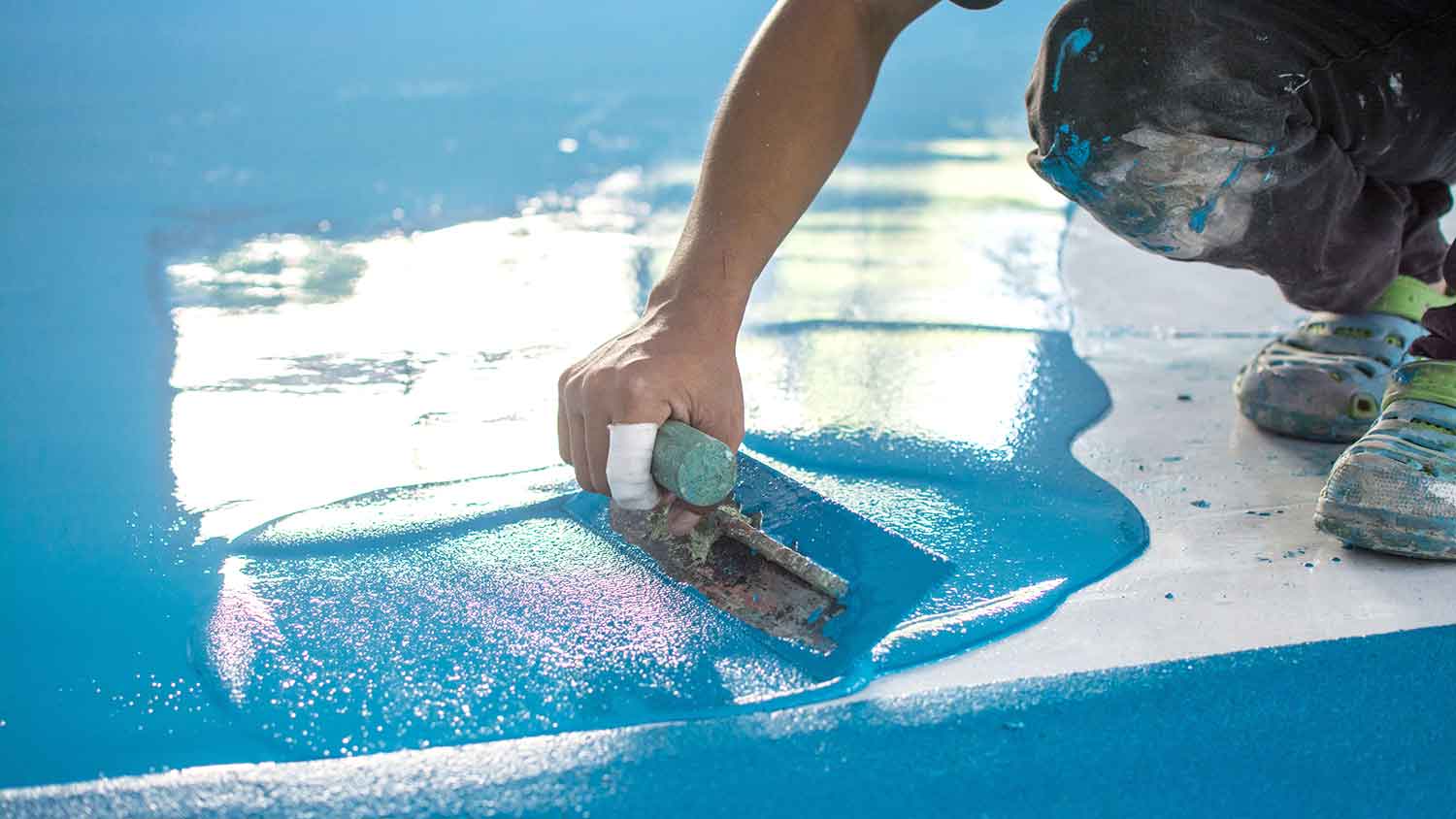
The cost to stain a deck varies depending on its size, location, and type of stain. Keep reading to learn more about how much you might spend.
Transform your drab garage floor into a durable surface


Dry and mild weather create the best conditions for painting.
Scheduling is an important factor because the project spans several days.
Preparation is key to creating a smooth, long-lasting, durable finish
The best time to paint a garage floor is when you can guarantee the best conditions for the paint to adhere, dry, and cure properly. To ensure optimal results, consider the weather, temperature, humidity, and your schedule. Plan your painting project around the following factors to achieve a beautiful and long-lasting finish.
Dry and mild weather conditions are essential when painting your garage floor. The ideal temperature range for painting concrete is between 60 and 90 degrees Fahrenheit since the concrete's temperature should be at least 55 degrees. The time of year that works for you will depend on the climate where you live, but avoid extreme temperatures in peak summer and winter as a rule.
You must ensure that the surface you are painting is completely dry. In areas that experience weather over 90°F, painting during cooler times of the day, like the morning or late afternoon, allows the paint to dry evenly without evaporating too quickly.

Considering these factors before painting your garage floor will help you ensure a successful and long-lasting finish.
Avoid painting during rainy or excessively humid periods, as moisture can interfere with the paint's adhesion and drying process. Check the weather forecast for any upcoming rain or extreme temperature fluctuations affecting your painting project. Remember you want to paint during stable weather to ensure the best outcome.
Paints used for garage floors, like epoxy paint, reach a touch-dry state within several hours. However, curing time can take 72 hours. Additionally, a minimum of 12 hours may be required between coats to ensure proper drying. Before starting your project, review the paint manufacturer's instructions, check the forecast, and ensure you have several days to dedicate to the project.
Before painting, thoroughly clean the garage floor and let it dry completely. The process may require sweeping, scrubbing, and etching the surface to remove dirt, oil, or grease that could interfere with the paint's adhesion. Experts say it is best to wait 24 hours for concrete to dry before painting.
Your garage door material also plays a factor when it comes time to paint it. You can paint garage doors made of wood, metal, or vinyl. You have the option of staining a wood garage door, though that won’t last as long as paint. Painting vinyl is more resistant to warping and fading than painting over wood. Painting a metal garage door is more challenging than painting other materials.
If you're planning to paint your garage floor, choosing the right time to do it is essential. Painting during unfavorable weather conditions, such as high humidity or wet weather, can lead to improper curing and bubbling. Similarly, extreme temperatures, whether too hot or too cold, can also cause problems impacting the paint’s durability.
To achieve the best results, ensure enough time to properly prepare the surface and allow sufficient drying time between coats. Ultimately, the success of your garage floor painting project will depend on choosing a time when the conditions and your schedule are conducive to proper painting.

The cost to paint your garage floor can average around $2,475 for an epoxy installation. Remember that your actual cost may vary from $1,600 to $3,370 depending on your location and garage's size.
Additionally, the condition of your garage floor can impact your total expense. You can expect to pay $6 to $14 per square foot for minor repairs like filling in small cracks. Significant damage impacting the foundation could escalate costs up to $7,800.
Whether to DIY or hire a professional to paint your garage floor ultimately depends on your priorities and circumstances. Hiring a local floor coating pro may be the best option if you have the budget and prefer a hassle-free experience with guaranteed results. Working with epoxy coating, changing the paint type on your floors, and dealing with repairs all warrant calling in an expert, as these circumstances can be very challenging for many homeowners.
But when all you need to do is lay down a fresh coat of standard paint, DIY can be rewarding if you enjoy hands-on projects, have the time and patience to dedicate to the task, and want to save money.
From average costs to expert advice, get all the answers you need to get your job done.

The cost to stain a deck varies depending on its size, location, and type of stain. Keep reading to learn more about how much you might spend.

Painting a garage door is one of the most impactful projects you can undertake with a smaller budget. Learn what makes up the total cost, as well as tips on how you can save.

Sandblasting is a powerful method to remove paint, primer, and other coatings from hard surfaces. Learn the cost to rent a sandblaster and the factors involved.

Stain protects your wood and enhances its natural beauty. Learn how long it takes for stains to dry based on your project, the type of stain, and the weather.

When using a ladder to paint, it’s crucial to follow necessary safety measures. Learn about how to properly use a ladder so you can safely get the job done.

In need of some stylish exterior window trim ideas? Explore 16 must-try styles and colors and find out what window material will suit your aesthetic.